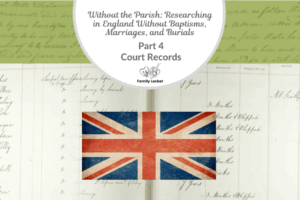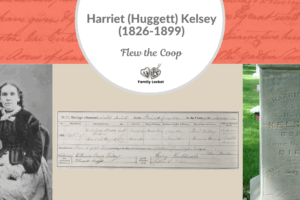
This blog post completes our five-part series on records in England besides the usual baptisms, marriages, and burials. In part one, we looked at the parish chest; in part two, tax records; in part three, wills and probate; and in part four court records. Part five deals with Manor rolls – what they are and how to find them.
Part 5. Manor Rolls
You’ll find that as you research further back in time, fewer and fewer records exist for the average English (or Welsh) inhabitant. Before Henry VIII’s mandate in 1538, religious denominations were under no obligation to document baptisms, marriages, and burials in their parish. Wills and tax records only documented people with a certain amount of wealth or property, leaving families of meager means (i.e., the bulk of England’s population) unrecorded.
Therefore, the most reliable resource for British genealogy pre-1538 is Manor Rolls. After the Norman Conquest in 1066, the estate manor was the unit of local administration in England and held its own court proceedings for everyone living on the estate. Manor rolls capture the day-to-day life of the estate’s inhabitants and may provide useful information about your ancestral family.
Types of Manor Court
The Manorial Court’s duty was to regulate the responsibilities and relationships between the manor lord, his steward and bailiff (or law officer), and the estate’s inhabitants. The manor lord acted as both the landowner and the judiciary for his estate, overseeing matters such as rental fees, election of local officials, essoins (excuses for not appearing in court), land surveys, etc. There were two types of manor court, each carrying different responsibilities:
- The Court Leet– handled assaults, petty crimes, poaching, and nuisances within the estate manor. After the 17th century, this court declined in importance and was taken over by the Justices of the Peace.
- The Court Barron– handled land transfers, tenant services, disputes between tenants, and disputes between the tenants and the manor lord. The court declined by the 18th century.
Records for both the Court Leet and Court Barron are held in the same collection for their respective manor. A typical manor roll begins with the date, the type of court held, and the names of the lord and steward. It should be noted that if a tenant who owned/rented property died, their heir would appear in court and pay a fee to the manor lord to take over the property. Such information can be instrumental in building earlier generations in your family tree. For example, see the 1349-1350 Court Roll from Conisbrough Manor, South Yorkshire, England.1

Edward III Conisbrough Manor Court Roll
How to Access and Read Manor Rolls
How can you find out which manor your ancestor belonged to? If you know the parish where your ancestor lived, the Manor Documents Register (MDR) on the National Archives website can tell you which manor(s) covered the area occupied by the parish. For example, Stewkley parish in Buckinghamshire was covered by four manorial estates: Fowlers Manor, Stewkley Grange Manor, Stewkley Manor, and Littlecote Manor. Locating early county maps or contacting the local archives may give an idea as to which manor is most relevant for research. The MDR also provides a list of surviving records for a given manor, the archives where they’re held, and a reference number. Oftentimes, manor rolls are held by county archives, trusts, or the National Archives and require contacting staff or making an in-person visit, in which case hiring a local genealogist/researcher could be beneficial.
Keep in mind that until 1732, most manor rolls were recorded in Latin. You do not need to be fluent in Latin, but it’s important to familiarize yourself with the most common terms and phrases used manor court documents. A glossary of terms can be found here.
It’s also important to note that manor rolls were also written in secretary hand, a writing style used by English scribes from the 15th-17th centuries. Fortunately, there is a tutorial online that can teach you how to read secretary hand. See the below example of “Secretarye Hande.” 2

“Secretarye Hande,” written in Secretary Hand
Manor rolls can be quite daunting, from accessibility to legibility, but they can also be very rewarding in understanding the daily life of your medieval ancestor. The manor rolls are the best source for extending your family line pre-1538, especially if your ancestors didn’t come from significant wealth or property.
I hope this blog series gives you new ideas on where to look for your ancestors beyond baptisms, marriages, and burials. England has a wealth of informative records just waiting to be explored for your family tree. I recommend again Ancestral Trails for a deep-dive into all the possible records that can be used for documenting your English ancestors.
Blog Posts in this Series:
Sources
- 23-24 Edward III Conisbrough Manor Court Roll 1349/50, digital image; “Court Roll 1349-50: The Black Death,” Conisbrough Court Rolls (https://www.dhi.ac.uk/conisbrough/browse/roll_1349-50_10.html : accessed June 2024).
- Courtesy of “Introduction,” English Paleography: Learn to Read Secretary Hand (https://sway.cloud.microsoft/2il2mOAQ3Dr1sZeP?ref=Link&loc=play : accessed June 2024).













1 Comment
Leave your reply.